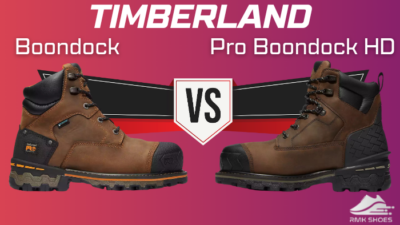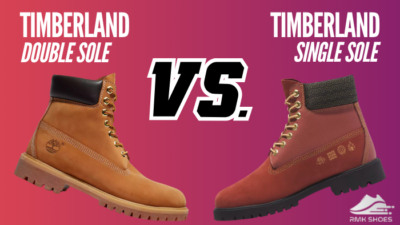When we talk about fitness and running shoes, two of the top brands that come into our minds are Hoka and Nobull.
Both of them claim to have high-quality footwear with defining features that are great for running and training. But which one is the true champion when it comes to hitting the road or the gym?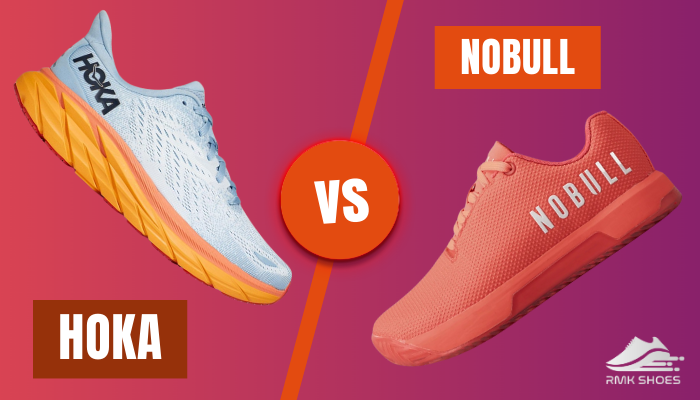
Let’s dive into this article to dissect each brand’s offerings and find out which one deserves a spot in your closet.
A Quick Rundown of NOBULL and HOKA
With the growing popularity of running and fitness training shoes, every brand is jumping in to get a piece of that pie.
Similarly, both Nobull and Hoka offer different series with different attributes to capture different demographics.
Before we dive into an in-depth comparison, let’s briefly overview NoBull and Hoka to get familiar with the brands and their offerings.
Nobull
NoBull is a renowned US brand founded in 2015 by two ex-Rebook employees. Their primary purpose was to create functional and comfortable footwear that feels great for sports and fitness training.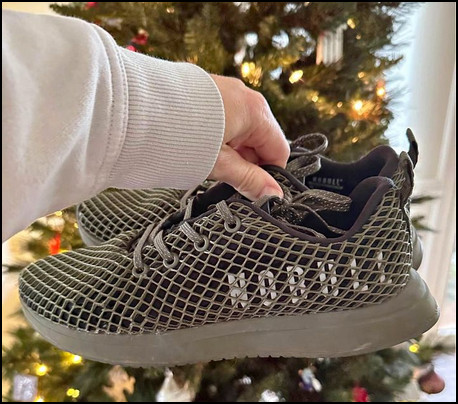
And boy oh boy, did they succeed!
Continuing this triumph, Nobull shoes went beyond their traditional minimalistic design and currently have various series with different purposes. For example, Nobull Trainer+ is their flagship trainer shoe with exceptional support for lifting weights or HIIT workouts.
But the primary target for this brand hasn’t changed a bit: providing durable and versatile footwear tailored for fitness workouts or outdoor running.
Hoka
HOKA shoes are wildly popular and critically acclaimed for good reasons when it comes to running or hiking. They have some of the best cushioning for maximum support and industry-leading technology for grip and performance.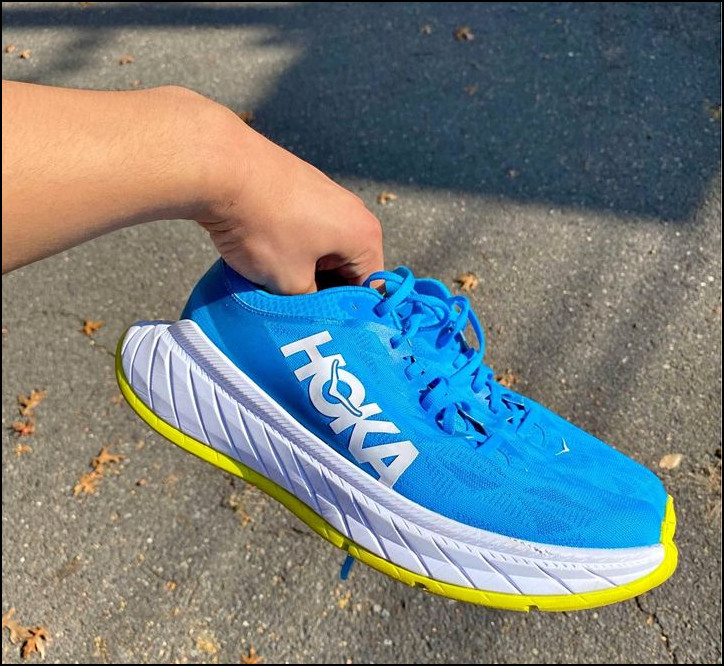
Similar to NoBull, Hoka also provides different series based on the user’s needs and style, such as Bondi, Clifton, Speedgoat, etc.
With such a broad range of shoes and subsequent features, Hoka can cater to the different needs of various athletes and runners.
Key Characteristics Comparison of NOBULL & HOKA Shoes
Since Hoka and Nobull have different goals, some fundamental aspects of their shoes also reflect this difference.
Let’s do a side-by-side comparison of some technical facets between Nobull and Hoka:
| Attributes | Nobull | Hoka |
|---|---|---|
| Types of shoes | Boots, runners, sneakers | Boots, sneakers, sandals |
| Purpose | Workouts, HIIT, weightlifting, running on straight asphalt roads | Running on any terrain, hiking, climbing, backpacking, fitness training |
| Commonly used upper material | Synthetic leather with microfiber | Mesh |
| Overall weight | Lightweight | Midweight |
| Midsole | SuperFabric | RMAT foam |
| Outsole | Rubber pods | Vibram Megagrip with rubber lugs |
| Toebox | Asymmetrical | ORTHOLITE sock liner |
| Breathability | More breathable | Less breathable |
| Cost | Less pricey | More pricey |
Now, let’s do an in-depth analysis and determine which brand offers a better product based on these facets.
Major Differences Between Nobull and Hoka Shoes
While both brands may offer products in the same categories(runner and trainer), they have some notable differences in the aforementioned aspects that you need to consider before buying.
Some crucial aspects, like upper material quality, durability, cushioning, etc, play a vital role in making a purchase decision.
As different products from the same brand have different characteristics, I will generalize these traits to make a sound comparison between the two brands.
Let’s see how the Nobull and Hoka shoes stack up against each other:
1. Categories Offering
As I have previously mentioned, Hoka and Nobull have their eyes on different audiences despite being in the sports bubble.
For example, Nobull shoes cater more to indoor exercise, while HOKA shoes are for outdoor extremes.
Each brand offers different types of shoes for their target demographics, which becomes more apparent when you look at their shoe categories. Such as:
| Difference In | Nobull | Hoka shoe |
|---|---|---|
| Categories | Training shoes, Running shoes, Golf, Lifter, Gym, Sliders, etc | Road running, Trail running, Hiking, Walking and gym, Stability, etc. |
| Purpose | For the gym, fitness workouts, road running, all-day, sports, recovery, etc. | For trail running on rough terrain, hiking outdoors in wet conditions, gym and fitness, medical work, sports, etc. |
To be honest, Hoka shoes seem more versatile and can be used for the same scenario as Nobul shoes. The same can not be said for Nobull shoes, which will become more evident as we discuss further.
2. Upper: Design, Material Quality, and Toecap
When you take a shoe from Nobull and put it side by side with Hoka, you’ll immediately notice the difference in the upper.
From the design to the material quality, both brands have distinct characteristics for each of their shoes.
Design
Nobull offers a much more simplistic design with little focus on logos or branding.
They have a less flashy, surfer-like design and a muted color pallet for some series, like Runner+ for men.
These shoes also have tapered laces and a breathable top, effectively making them less about sleek aesthetics and more about comfort.
On the flip side, HOKA isn’t afraid of showing their true colors.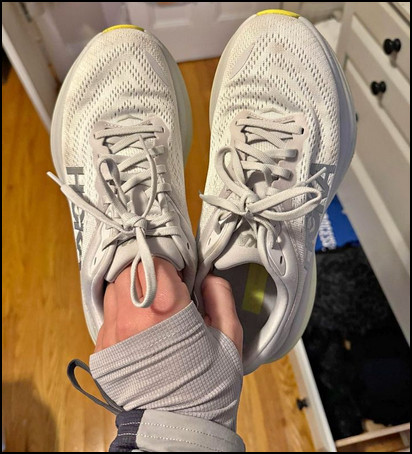
They have both flashy and less flashy offerings and collaborated with athletes and designers to bring out the best-looking and mass-appealing products.
Material Quality
Despite the brands having two separate design goals, neither has sacrificed the upper material’s quality.
Most NoBull shoes have Hypertext synthetic leather and abrasion-resistant breathable material, which reduces sweating and odor.
But what about durability?
Despite having a rugged look, the upper of Nobull shoes is less likely to protect your feet from outer impact. And that’s where the HOKA shoes come in.
Hoka shoes, especially the runners, have much more durable and less breathable mesh, which offers both comfort and protection. But for the sweaty feet, it can become a bit smelly in the long hikes.
Not to mention, the Hoka shoes I have used felt a bit more weighty compared to most Nobull runners/trainers.
| Types of Shoes | Nobull Shoes Weight Range | Hoka Shoes Weight Range |
|---|---|---|
| Runners | 200-280g | 250-300g |
| Trainers | 280-300g | 270-360g |
While most HOKA running shoes have a GTX edition with Gore-Tex material for waterproofing, such options are sorely missing for Nobull shoes.
Toebox
The asymmetrical toebox found in the Nobull shoes feels more natural during weight lifting or treadmill running, thanks to the wider toe room and extra wiggle space.
But I will still pick HOKA’s toe cap ergonomic and build as it feels comfortable despite having a narrower width. This narrower width also prevented my toes from sliding on rough terrains.
Overall, HOKA’s shoes stand out for their brilliant design and durable material that is suitable for both running and workouts.
3. Midsole & Outsole
Another common difference between Hoka and NoBull shoes is the design & quality of the sole.
Right away, we can see that the majority of the NoBull shoes have a more flat feet design, which is suitable for indoor workouts or weight lifting.
The complete opposite can be seen in Hoka shoes, as they are more curved and flexible for running purposes.
And the difference doesn’t end there.
Midsole
NoBull shoes use the in-house SuperFabric midsole. This may provide good underfoot cushioning and energy return for gym workouts, but they are not very stable for outdoor running.
It also provides tactile feedback with the ground, thanks to the lower stack height compared to Hoka shoes.
Meanwhile, Hoka uses its patented RMAT foam technology for added responsiveness and balance, both of which are quite useful in strenuous workloads. Such midsoles should also be no issue for indoor exercises.
Outsole
Not that the Nobull shoes have bad traction, but HOKA shoes are on a whole another level when it comes to the outsole quality.
They have a much higher stack height to evenly disperse impacts and rubber lugs that provide incredible traction in any wet conditions.
Rainy or wet mud? Easy for HOKA’s traction lugs.
But the well-designed rubber pods of Nobull shoes are also capable of providing a good grip on any smooth surface.
Furthermore, both brands use good quality material for the outsole as they are less prone to wear and tear.
Ultimately, Hoka and Nobull shoes have excellent soles that perfectly serve their corresponding needs. But the Hoka shoes take the lead for cushioning and comfort by a decent margin.
4. Fit and Sizing
Both Hoka and Nobull shoes have true-to-size(with half-size options), well-designed tongue, and adequate laces for a snug fit.
However, the Hoka shoes tend to be wider compared to the Nobull shoes, making them the correct choice for people with wider toes. It’s also important for those who are worried about bunions or blistering.
The asymmetrical toebox found in the Nobull shoes provided better stability during my workouts. But this also made these shoes less appropriate for long-running/hiking.
The overall fit and sizing of Hoka shoes should be suitable for the majority of the users.
5. Durability & Performance
Neither Hoka nor Nobull is perfect when it comes to performance and durability, especially when you put them through the same trial. That being said, they both tackle this aspect in their own way.
Hoka shoes have more stability and less comfort for outdoor exercise. Meanwhile, Nobull shoes have more comfort and less stability.
As soon as we take things indoors, the opposite is true for both brands.
For example, the rugged build quality of the HOKA shoes gives them more durability compared to Nobull for long hiking in rough terrain.
Your feet also don’t slide around thanks to Hoka’s Meta-Rocker technology, which is a big issue in Nobull Knit runners.
If we put the entire spotlight on Nobull shoes, we can see that they also have a nice & stiff upper material(except the Knit versions).
After putting in just over a hundred hours, it became apparent that the Nobull shoes are less prone to wear and tear despite having less reinforcement. FYI, I’m talking about indoor running and workouts.
As soon as you take both of them on the outdoor extremes, HOKA shoes reign supreme.
Let me give you an example.
My NOBULL Runner felt more user-friendly during my gym training, proving to be a much better CrossFit option.
But when I made the mistake of taking it on a hike, the performance was all over the place and nowhere near as stable as my HOKA Speedgoat 5 GTX.
| Attributes | NoBull | HOKA |
|---|---|---|
| Outsole durability range | Up to 600 miles | Up to 500 miles |
| Stability | Moderate | Great with MetaRocker technology |
| Break in | 2-5 runs/sessions | 5-10 runs/sessions |
| Heel lockdown | Secure | Moderate |
Not to mention, the lack of proper waterproofing and traction lugs makes the Nobull shoes unfit for any wet condition or crossing creeks.
That being said, if you plan to use it for indoor purposes, you’re more likely to prefer Nobull shoes than HOKA’s. But for the outdoor troops, HOKA shoes will offer better performance and durability overall.
6. Price and Value Proportion
Recently, one of my cousins asked me for a shoe recommendation. He had a tight budget(below 150$) and wanted an all-day shoe that was capable of occasional long running/hiking as well.
This had me in a dilemma as the HOKA shoes fit perfectly for his requirements but exceeded the budget.
On the other hand, we can find pretty good Nobull shoes around that price, but they aren’t that good for heavy outdoor tasks.
The price range of
- Hoka One One shoes: $120-300+
- Nobull shoes: $90-200+
We ended up going with the Hoka Project Clifton for $165 since it gave the best of both worlds with a slight budget increase.
Do you see where I am going with this?
If you consider the price-to-value/feature ratio, the HOKA shoes seem like a better buy overall.
Pros and Cons of HOKA and NoBull Shoes
No matter how many dissimilarities each brand has, both brands have unique characteristics that make them stand out against each other.
That being said, just because they are unique doesn’t mean they’re useful in all scenarios. Some of these attributes can make them worthy of purchase, while others can make you reconsider.
Let’s see the pros and cons of the shoes from each brand to get a better understanding:
Nobull
- »Great for gym training and workouts.
- »Comfortable running experience on an asphalt road.
- »More breathable.
- »Long durability.
- »Minimalistic design.
- »Robust build quality, especially in the running shoes.
- »Poor outdoor performance.
- »Less grippy outsole.
- »Slightly lower quality material than high-end brands.
Hoka
- »Thick midsole for maximal cushioning.
- »Great for long-running.
- »Provides adequate grip on all kinds of surfaces.
- »Moderate fit for hiking/climbing.
- »Additional support for waterproofing.
- »Vegan-friendly option.
- »Less breathable material can cause sweaty feet.
- »Some models are more prone to wear and tear, like Speedgoat 4.
- »Less feedback from the ground while running.
These key points should also give you a good idea of why Hoka/Nobull shoes are great or in which scenario you should avoid them.
NoBull vs HOKA: Which One Should You Pick?
Despite both brands having athletic shoes, the footwear from Hoka provided a notably different experience than Nobull’s. The overall responsiveness, snug fit, and high-quality material make HOKA shoes a much better option for both indoor and outdoor workouts.
But wait, there’s more!
If you prefer a training shoe that has more breathable material and offers great performance for indoor running/exercising, Nobull shoes can be your best bet.
On the flip side, Hoka is a no-brainer for an all-in-one shoe that can withstand any trial and is tested & beloved by millions of shoe enthusiasts.
Frequently Asked Questions
What brand compares to Hoka?
Since Hoka makes top-tier trail running and hiking shoes, the brand that comes closest in this regard is Brooks. You can’t go wrong with either brand if you’re looking for comfort and solid build quality.
What makes NoBull special?
NoBull trainers stand out for their flat feet design and minimalistic design. Such characteristics make them a great choice for indoor running and exercise.
Is Hoka a high-end brand?
From both a price and performance standpoint, HOKA can easily be considered a high-end brand for running and hiking shoes.

